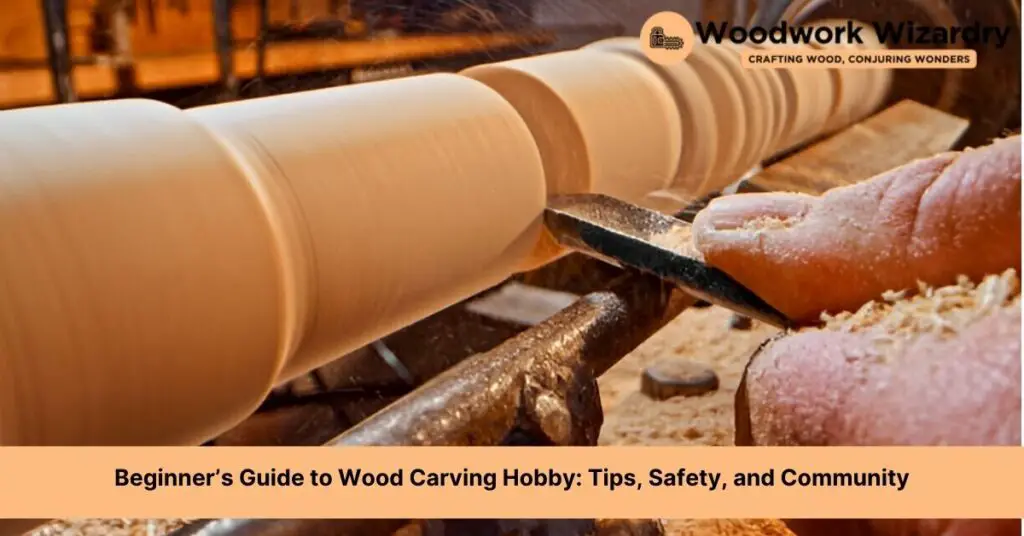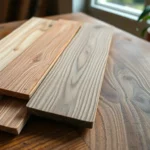In the world of hobbies, there’s something uniquely satisfying about creating beauty from the raw, natural world. That’s where wood carving comes in—a craft that not only allows us to express our creativity but also connects us with the timeless tradition of working with our hands. It’s a hobby that’s both ancient and incredibly relevant in today’s DIY culture.
We’ve all admired the intricate details of a wood carving at some point, whether it was a piece of furniture, a sculpture, or a simple kitchen utensil. The thought of taking a piece of wood and transforming it into something both beautiful and functional is fascinating. It’s not just about the end product; it’s about the journey there—the feel of the wood, the sound of the tools, and the scent of freshly carved wood. Join us as we delve into the world of wood carving, a hobby that’s as rewarding as it is challenging.
Exploring the Wood Carving Hobby
Diving deeper into the world of wood carving, we find a hobby that’s as enriching as it is ancient. It’s not just about chiseling away at a piece of wood; it’s a journey into the heart of creativity, using tools and techniques that have been passed down through generations. Let’s explore the essential aspects that make wood carving a fascinating hobby.
Tools and Materials
- Carving Knives – Essential for detail work, carving knives allow for precision cuts and shapes.
- Chisels and Gouges – Used for removing larger chunks of wood, these tools are crucial for shaping and sculpting.
- Wood Types – Softwoods like basswood are ideal for beginners, while hardwoods like walnut pose a rewarding challenge for more experienced carvers.
- Safety Gear – Gloves and carving thumb guards protect hands from slips, ensuring that carving is both safe and enjoyable.
Techniques and Styles
- Whittling – This is the most traditional form, involving a knife and blocks of wood to create figures or decorative objects.
- Relief Carving – Involving carving figures and scenes onto a flat wood panel, this style adds dimension and depth.
- Chip Carving – This technique uses knives or chisels to remove small pieces of wood, creating patterns and designs.
- Creativity and Personal Expression – Every piece is unique, reflecting the carver’s vision and technique.
- Connection to History – Engaging in wood carving connects us with artisans of the past, keeping traditions alive.
- Sense of Accomplishment – Completing a project brings a tangible sense of achievement, especially when overcoming the challenges of mastering different techniques.
Through exploring tools, techniques, and the deeper benefits of the wood carving hobby, we gain a comprehensive understanding of its appeal. It’s a hobby that doesn’t just result in beautiful creations but also offers a fulfilling journey of learning and personal growth.
Tools and Materials Needed for Wood Carving
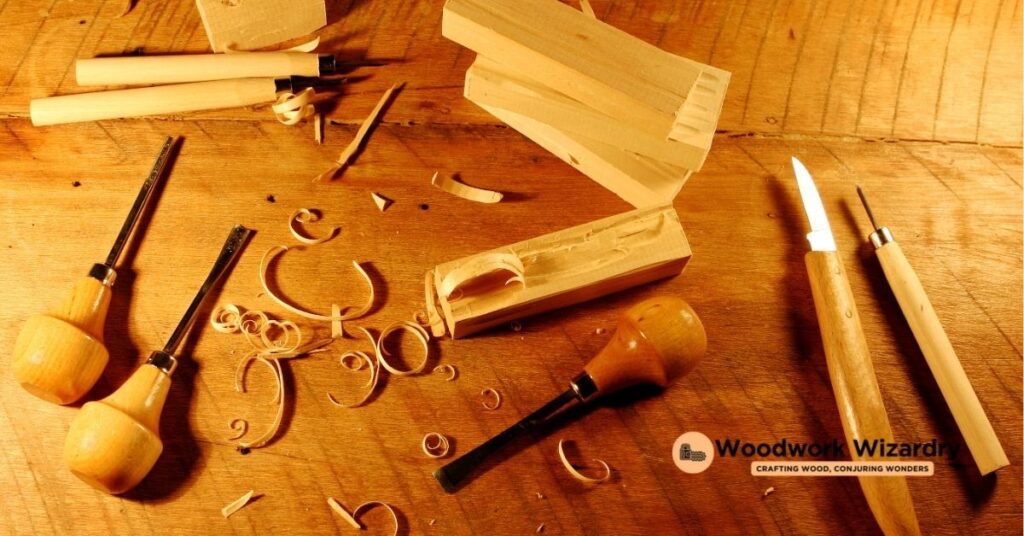
Diving into wood carving requires gathering the right tools and materials to ensure success and enjoyment in this craft. Equipping oneself adequately is the first step towards turning vision into reality. In this section, we detail the essential items one needs to embark on their wood carving journey.
Essential Tools
- Carving Knives – Ideal for detailed work, these knives come in various shapes and sizes to suit different carving needs.
- Gouges – With their curved cutting edges, gouges are perfect for creating deep sweeps and curves in the wood.
- Chisels – Essential for larger, more precise cuts, chisels are used alongside mallets to remove significant portions of wood.
- V-Tools – Known for their V-shaped cutting edge, these tools are great for creating sharp lines and detailing.
- Mallets – Often used with chisels and gouges to apply more force, mallets help in shaping the wood without causing damage.
Preferred Materials
- Soft Woods – Woods like basswood are beginner-friendly due to their softness, making them easier to carve.
- Hard Woods – As skills advance, harder woods such as oak offer a challenge with their durability and fine grain.
Safety Gear
- Gloves – Essential for protecting one’s hands from cuts and splinters.
- Safety Glasses – These protect the eyes from wood chips and dust, ensuring a safe carving environment.
- Sandpaper – Vital for smoothing out rough edges and adding the finishing touches to a piece.
- Wood Finish – Used to seal and protect the final piece, wood finishes also enhance the natural beauty of the wood.
Gathering these tools and materials positions carvers to begin their artistic journey, transforming raw pieces of wood into expressive works of art. Through mastering the use of these tools and selecting the right materials, wood carving not only becomes an accessible hobby but also an avenue for personal growth and creative expression.
Learning Wood Carving
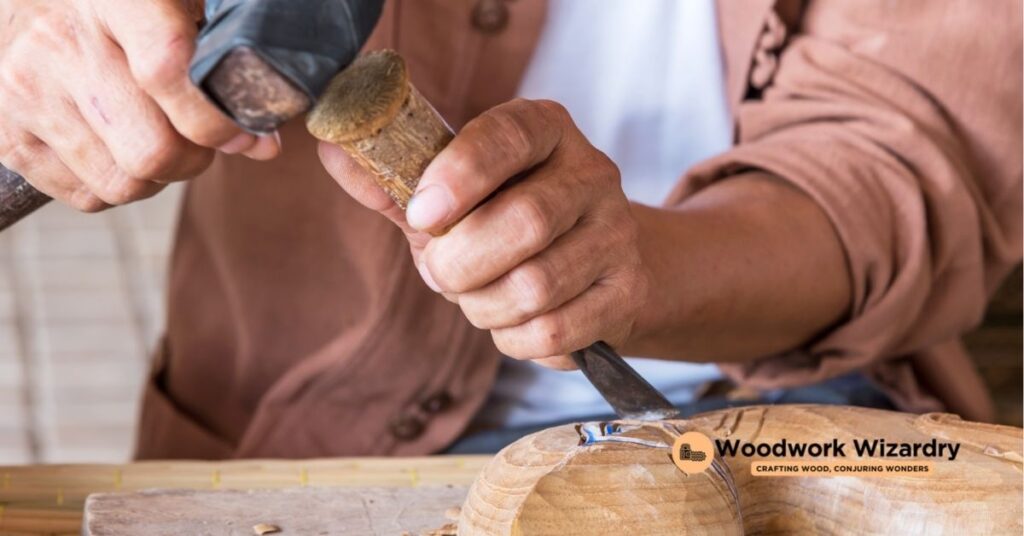
Once you’ve gathered your tools and materials, the next step in your wood carving journey is learning the craft. Mastering wood carving involves understanding the different techniques and gradually improving your skills over time. Here’s a breakdown of some basic steps and resources to help you get started.
Start with Basic Techniques
We recommend beginners start with simpler techniques such as whittling. Whittling involves using a knife to carve basic shapes or figures from wood. It’s a great way to familiarize yourself with how wood behaves under the knife and an excellent method for practicing control and precision. As you gain confidence, you can progress to more advanced techniques like relief carving and chip carving. Each technique has its unique challenges and appeal, allowing for diverse creative expressions.
Practice Regularly
Like any skill, regular practice is key to improving in wood carving. Dedicate time each week to practice your techniques, starting with basic cuts and moving on to more complex projects as your skills develop. Don’t be discouraged by mistakes; they’re an inevitable part of the learning process and offer valuable lessons.
Seek Guidance and Inspiration
Learning from more experienced carvers can significantly accelerate your progress. Look for local wood carving classes or workshops where you can receive hands-on instruction and feedback. Additionally, online tutorials, forums, and videos are fantastic resources for learning new techniques and getting inspired. Websites like YouTube have countless tutorials catering to all skill levels and styles.
Join a Community
Participating in a wood carving community, whether online or in person, provides support, motivation, and friendship. Communities offer opportunities to share experiences, ask for advice, and showcase your work. Engaging with others who share your passion for wood carving enriches the hobby and opens up new avenues for learning and exploration.
As you delve deeper into wood carving, remember that patience and perseverance are your best allies. Wood carving is a rewarding hobby that allows for continual learning and growth. Enjoy the journey, cherishing each project as an opportunity to enhance your skills and express your creativity.
Projects to Get Started With
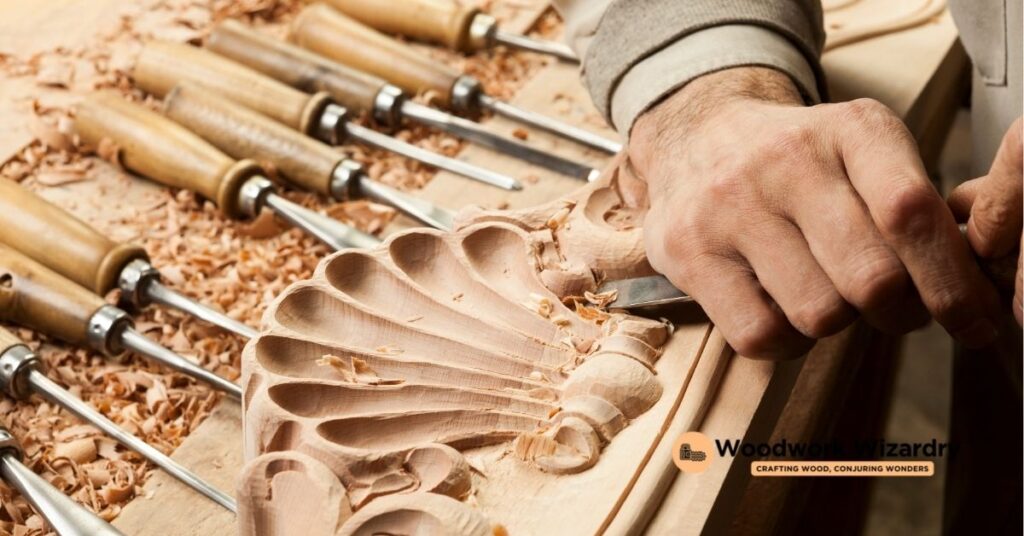
Having explored the essentials of wood carving, including tools, materials, and techniques, it’s time to dive into some projects ideally suited for beginners. These projects not only help sharpen your carving skills but also lead to a satisfying sense of achievement.
Simple Spoons
Starting with something as fundamental as carving a spoon allows us to understand wood grain and practice the basic carving techniques. Using a piece of softwood, you can learn to shape the spoon’s bowl with a gouge and smooth the handle with a carving knife. Spoons serve as a perfect starting point, as mistakes are easily forgiven in their rustic charm.
Decorative Signs
Creating decorative signs offers a canvas to practice lettering and simple imagery. Whether it’s carving your name, a welcome sign, or an inspirational quote, this project introduces you to relief carving. We learn to carve out letters and shapes, giving them depth against the flat surface of the wood. It’s a project that combines artistic expression with technical skill.
Wooden Jewelry
Carving wooden jewelry, such as pendants or earrings, teaches us precision on a small scale. Choosing a small block of hardwood, we can experiment with different shapes and designs. This project hones our attention to detail and the delicate handling of tools, producing wearable art or personalized gifts.
Custom Coasters
Coasters are practical items that offer a broad surface for experimenting with various carving techniques. From geometric patterns to nature-inspired designs, custom coasters are an excellent project for learning about depths and textures. Plus, they make for attractive additions to your home decor or thoughtful handmade gifts.
By tackling these projects, we gradually build our carving skills, moving from basic to more complex techniques. Each completed project not only adds to our experience but also to our collection of handcrafted items, marking the progress in our wood carving journey.
Health and Safety Tips
Transitioning from beginner projects like spoons and coasters to more intricate wood carving tasks, it’s crucial to prioritize our health and safety. Here, we’ll delve into essential tips that ensure a safer carving experience.
Wear Protective Gear: Gloves and thumb guards protect hands from sharp tools and splinters. Eye protection is a must to guard against wood chips and dust.
Work in a Well-Ventilated Area: Wood dust can be harmful if inhaled over time. Ensuring adequate ventilation keeps the air clean and safe.
Keep Tools Sharp: Ironically, sharp tools are safer. They require less force to cut, reducing the risk of slipping and causing injury.
Secure the Workpiece: Using clamps or a vice to hold our projects firmly in place helps prevent the wood from moving unexpectedly.
Learn Proper Techniques: Understanding the right way to hold and use tools minimally reduces the risk of accidents. It’s also beneficial to learn how to properly position our hands away from the cutting edge.
Take Regular Breaks: Fatigue can lead to mistakes. Stepping away for brief periods helps maintain focus and concentration.
Keep a First Aid Kit Handy: Despite all precautions, accidents can happen. A well-stocked first aid kit ensures we’re prepared for minor cuts or injuries.
By integrating these health and safety tips into our wood carving practice, we not only ensure our well-being but also enhance our overall experience with this rewarding hobby. This focus on safety complements our journey from mastering basic skills to exploring more complex wood carving techniques, ensuring that we enjoy every step of this creative endeavor with confidence and care.
Joining the Wood Carving Community
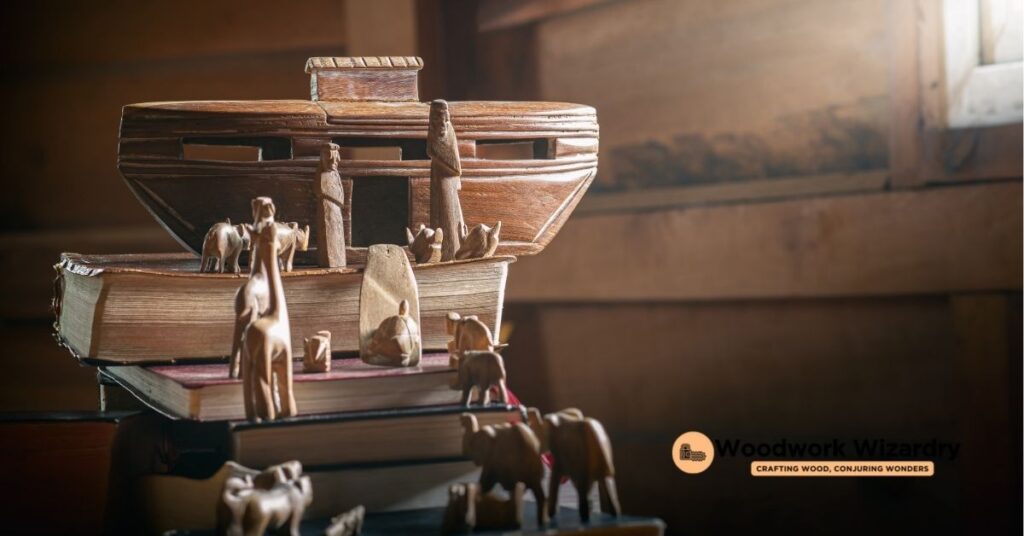
After resonating with the core safety and health practices essential for wood carving, it’s a thrilling venture to explore the next steps. Entering the wood carving community stands as a monumental phase, facilitating connections, inspiration, and a plethora of learnings. Engaging with fellow wood carving enthusiasts enriches our journey, deepening our understanding and appreciation for this art form. Here’s how to immerse ourselves into this vibrant community.
Discover Local Wood Carving Clubs
Starting locally offers immediacy and tangible interactions, allowing us to discover workshops and events. By joining a wood carving club in our area, we not only get to meet others who share our passion but also gain access to collective wisdom and resources that can significantly enhance our skills and project ideas. Clubs often organize regular meetings, exhibitions, and collaborative projects, making it easier for us to stay motivated and involved.
Participate in Online Forums and Social Media Groups
Digital platforms provide a broad spectrum of experiences and insights from around the globe. Participating in online forums and social media groups related to wood carving opens up a treasure trove of information, ranging from troubleshooting to innovative techniques. Platforms like Reddit, Facebook, and Instagram serve as excellent spaces for sharing projects, receiving feedback, asking questions, and fostering camaraderie with wood carvers at various skill levels.
Attend Workshops and Seminars
Workshops and seminars, whether found through clubs or independently, offer structured learning opportunities from seasoned carvers. These events range in focus from introductory techniques to specialized carving styles, offering something for everyone. Participation not only hones our skills but also embeds us deeper into the community, building lasting friendships and networks.
Volunteer for Community Projects
Contributing to community projects or collaborative efforts can be a fulfilling way to apply our wood carving skills for a greater cause, enhancing public spaces or contributing to charitable causes. Volunteering connects us with a diverse group of individuals, enriches our portfolio, and strengthens bonds within the wood carving community.
By integrating ourselves into the wood carving community through these avenues, we expand our horizons, gaining much more than just technical skills. It’s a journey of constant learning, sharing, and evolving, surrounded by individuals who share our enthusiasm for wood carving.
Conclusion
Embarking on the wood carving journey offers more than just the pleasure of creating beautiful pieces. It’s about growing through patience and perseverance, ensuring we’re mindful of our health and safety along the way. By diving into the wood carving community, we open doors to enriching experiences that go beyond the craft itself. It’s in these interactions and shared moments that we find inspiration, learn new techniques, and truly appreciate the artistry in wood carving. Let’s continue to carve our paths, share our stories, and enjoy the beauty of wood carving together.
Related Posts:
- Top Carving Woods: Best Picks for Beginners to Pros
- Top 5 Best Woods for Spoon Carving: Insights & Maintenance Tips
- Explore Different Types of Wood Carving: Techniques & Projects
- Beginner’s Guide: Mastering Wood Carving Techniques & Fixes
- Exploring Wood Carving: Techniques, Benefits, and Beginner’s Guide
- Beginner’s Guide to Wood Carving Hobby: Tips, Safety, and Community

